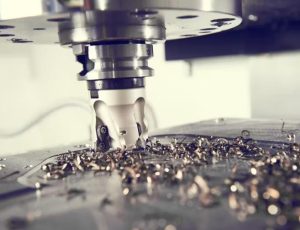High Volume CNC Machining: What to Know?
High volume CNC machining is a crucial aspect of modern manufacturing, enabling the production of large quantities of parts with precision and efficiency. This article explores the intricacies of high volume CNC machining, covering its processes, advantages, and considerations.

Understanding High Volume CNC Machining
High volume CNC machining involves the mass production of components using Computer Numerical Control (CNC) machines. This method revolutionizes manufacturing by automating processes and optimizing efficiency to meet large-scale production demands.
Key Components of High Volume CNC Machining
1. Automated Production Lines
High volume CNC machining often employs automated production lines equipped with multiple CNC machines working in tandem. This setup maximizes throughput and minimizes idle time, ensuring continuous production.
2. Efficient Tooling Strategies
Utilizing advanced tooling strategies such as high-speed machining and multi-axis capabilities, high volume CNC machining optimizes cutting speeds and feeds to enhance productivity while maintaining quality.
3. Dedicated Workholding Solutions
Tailored workholding solutions, such as pallet changers and robotic loaders, facilitate rapid part loading and unloading, minimizing downtime between production cycles.
4. Scalable Manufacturing Processes
Scalable manufacturing processes allow for seamless integration of additional CNC machines or production cells to meet fluctuating demand without compromising efficiency.
5. Real-time Monitoring Systems
Implementing real-time monitoring systems enables operators to track production metrics such as cycle time, tool wear, and quality control parameters, optimizing performance and minimizing downtime.
Advantages of High Volume CNC Machining
- Efficiency: High volume CNC machining significantly reduces cycle times and labor costs compared to traditional manufacturing methods.
- Cost-effectiveness: Despite initial setup costs, high volume production leads to economies of scale, resulting in lower per-part costs.
- Precision: CNC machining ensures consistent quality and dimensional accuracy across large production runs, meeting stringent specifications.
- Scalability: The scalable nature of high volume CNC machining allows manufacturers to adapt production capacity to changing market demands swiftly.
- Material Flexibility: CNC machines can process a wide range of materials, including metals, plastics, and composites, offering versatility in part production.
Considerations for High Volume CNC Machining
- Cost Analysis: Conducting a thorough cost analysis is essential to determine the feasibility and profitability of high volume CNC machining for specific production volumes.
- Production Planning: Effective production planning and scheduling are critical to optimizing machine utilization and minimizing idle time in high volume machining operations.
- Quality Assurance: Implementing robust quality control measures ensures that parts meet required specifications consistently throughout large production runs.
- Maintenance Requirements: Regular maintenance and upkeep of CNC machines are essential to prevent downtime and maintain optimal performance over the long term.
- Lead Times: Despite high efficiency, factors such as setup time and material availability can impact lead times in high volume CNC machining operations.
In conclusion, high volume CNC machining offers manufacturers a competitive edge in meeting the demands of large-scale production with efficiency and precision. By leveraging advanced technologies and streamlined processes, manufacturers can achieve cost-effective and scalable manufacturing solutions tailored to their specific requirements.